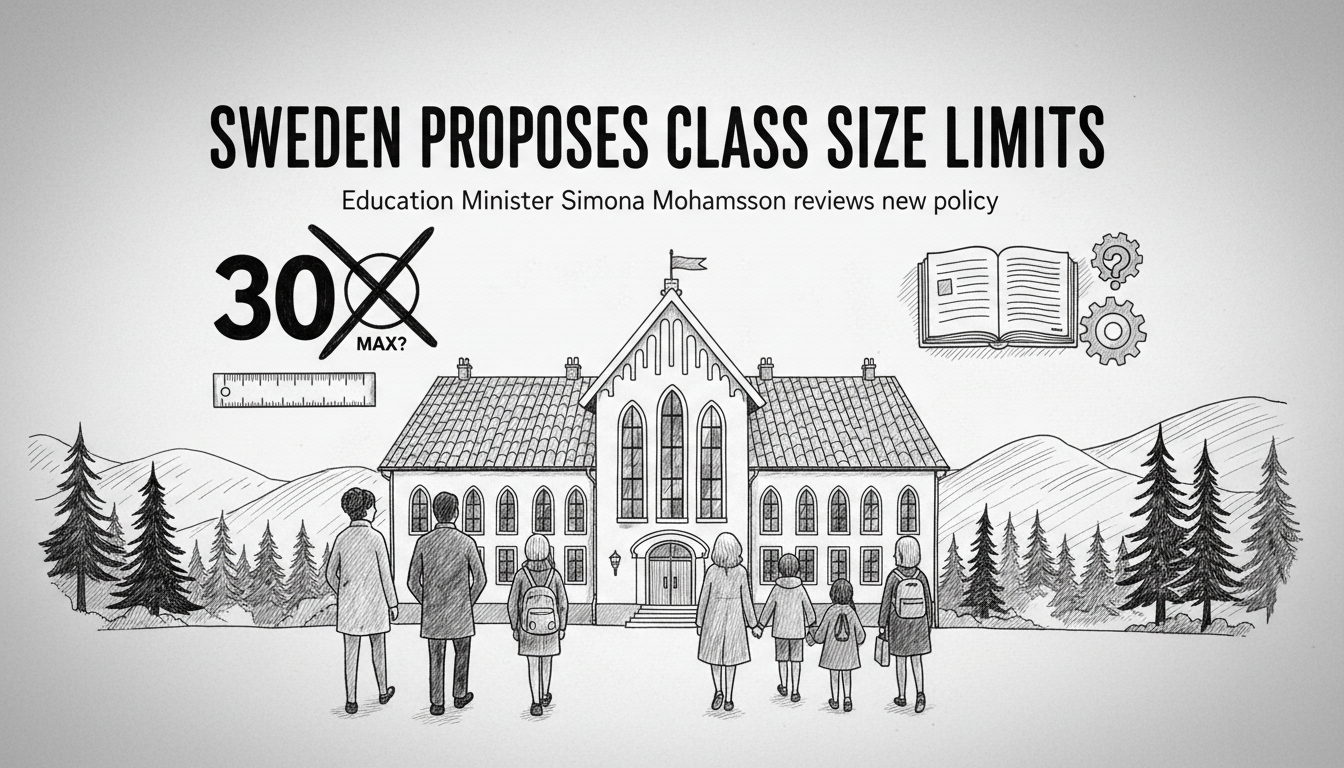Sweden's government will investigate implementing maximum class size limits in schools. Education Minister Simona Mohamsson announced the upcoming review. She stated that classes should not contain 30 students. The Liberal Party proposed the measure to improve educational quality.
Smaller class sizes could transform Swedish education. Research shows students learn better in smaller groups. Teachers can provide more individual attention. Students receive better support for their needs. The current system allows significant variation in class sizes.
Sweden's education system has faced challenges in recent years. International test scores have declined since the 1990s. The country dropped from top rankings in mathematics and reading. Many experts point to larger class sizes as one contributing factor. This proposal addresses a long-standing concern among educators.
Education Minister Mohamsson emphasized the importance of this change. She believes smaller classes will benefit both students and teachers. The investigation will determine appropriate maximum numbers. It will also create implementation guidelines for schools nationwide.
The Swedish school system operates differently than many countries. Municipalities largely control education funding and organization. This decentralization creates varying conditions across regions. National class size limits would standardize one aspect of education.
International readers should understand Sweden's unique education context. The country provides free education through university level. Tax funding supports both public and private schools. The system emphasizes equality and accessibility for all students.
This proposal comes amid broader education debates in Sweden. Teacher shortages have affected many regions. School results show increasing performance gaps. The government seeks multiple solutions to improve educational outcomes.
Class size limits could impact school budgets and teacher hiring. Smaller classes might require more classrooms and educators. The government must consider these practical implications. The investigation will address both educational benefits and implementation costs.
Swedish education policy often influences other Nordic countries. Norway and Finland watch developments closely. Denmark might consider similar measures if Sweden succeeds. The Nordic region shares many educational values and challenges.
Parents and teachers have long advocated for smaller classes. They argue current conditions strain resources. Teachers struggle to meet individual student needs. Students sometimes lack necessary support for optimal learning.
The investigation represents a significant policy shift. Previous governments focused more on structural reforms. The current approach targets classroom conditions directly. This could lead to tangible changes in daily school life.
What timeline will the investigation follow? When might implementation begin? These questions remain unanswered for now. The education ministry will provide details in coming months. The proposal has generated positive reactions from education stakeholders.

